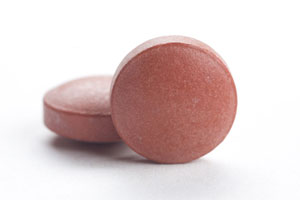STRONG evidence supporting the use of corticosteroids in Bell’s palsy has helped clarify the treatment options for this mysterious condition, an Australian expert says.
Research published in the Archives of Otolaryngology — Head & Neck Surgery provides considerable support for the growing trend towards corticosteroid use for the condition. (1)
Sydney otorhinolaryngologist Dr Glen Croxson said the study helped clarify treatment options for Bell’s palsy, attributing previous treatment confusion to “imperfect studies”.
In the latest study, 829 patients aged 18–75 years with acute, unilateral, peripheral facial palsy were randomised to four treatments within 72 hours of onset: placebo, prednisolone, the antiviral valacyclovir hydrochloride, or prednisolone plus valacyclovir.
Prednisolone was given as 60 mg/day for 5 days, followed by 5 days of tapering.
Patients’ facial function was evaluated at 12 months using the Sunnybrook and House–Brackmann grading systems.
The researchers found that treatment with prednisolone within 72 hours of onset significantly reduced the number of patients with mild to moderate severity of palsy at 12 months, but did not reduce the number of patients with severe sequelae.
There was also a significant reduction in the number of patients with mild to moderate synkinesis (involuntary movement) among those receiving prednisolone.
Valacyclovir alone or in combination with prednisolone did not affect the severity of sequelae compared with prednisolone alone.
Dr Croxson said two recent well designed, double-blind, randomised controlled trials had both come to the same conclusion — “prednisolone works, antivirals don’t”.
He said most treating physicians would be aware of these outcomes and prednisolone should now be considered the standard treatment for Bell’s palsy, as the potential benefits of this treatment outweighed the potential side-effects.
“One has to be cautious in diabetics, and people with a history of gastrointestinal bleeding, but this is a routine caution. Avascular necrosis of the head of femur seems to be a largely historical concern”, Dr Croxson said.
– Amanda Bryan
1. Arch Otolaryngol Head Neck Surg 2012; 138: 445-449
Posted 28 May 2012

 more_vert
more_vert
Dr Croxson, as I read the paper, the outcomes studied were sequelae of Bell’s Palsy, but not recovery from Bell’s Palsy. There would seem to be a difference; the authors of the paper in question did not seem to discount the previous studies where steroids and anti-virals where recovery was improved. The last couple of paragraphs or so of the paper where they discuss the limitations of the study (probably applicable to many clinical studies) makes interesting reading. The risk of adding anti-virals is small. I’m not sure this paper is excludes benefit. Please comment.